by Alethea Drexler, archives assistant
mcgovern@exch.library.tmc.edu
I am easily distracted by shiny objects.
There is more to an archive than books and professional papers. I’m a bit of a pop culture aficionado, as I’m sure our readers can tell from past blog posts: I love ephemera[1]–the postcards, advertising, commercial packaging.
I also love the realia[2]. When someone calls and asks us if we might be interested in his grandfather’s medical implements, it feels a little like Christmas.
Santa Claus arrived early yesterday in the person of J. Richard Stanley, who brought us a pair of basal metabolic rate machines. No, we didn’t know what that meant, either, but, luckily, Mr. Stanley also brought documentation. Documentation is one of the few things that makes me happier at work than do ephemera and realia, because it’s very important but often elusive. The entire Thingamajig series can pretty much be attributed to lack of documentation.
Basal metabolic rate, it turns out, is the amount of energy expended per day by a person (or animal) at rest[3]. The basal metabolic rate is all the rage right now–when I searched it, I found one entry with a definition, and then a zillion more entries about how to increase mine, sponsored by various diet and fitness sites. Basically, the higher one’s basal metabolic rate, the more calories one burns without even trying[4].
Mr. Stanley brought us two machines from two different decades. Today’s blog post will be about the older of the two, which is a Jones Motor Basal metabolism tester, patent date of 1937.
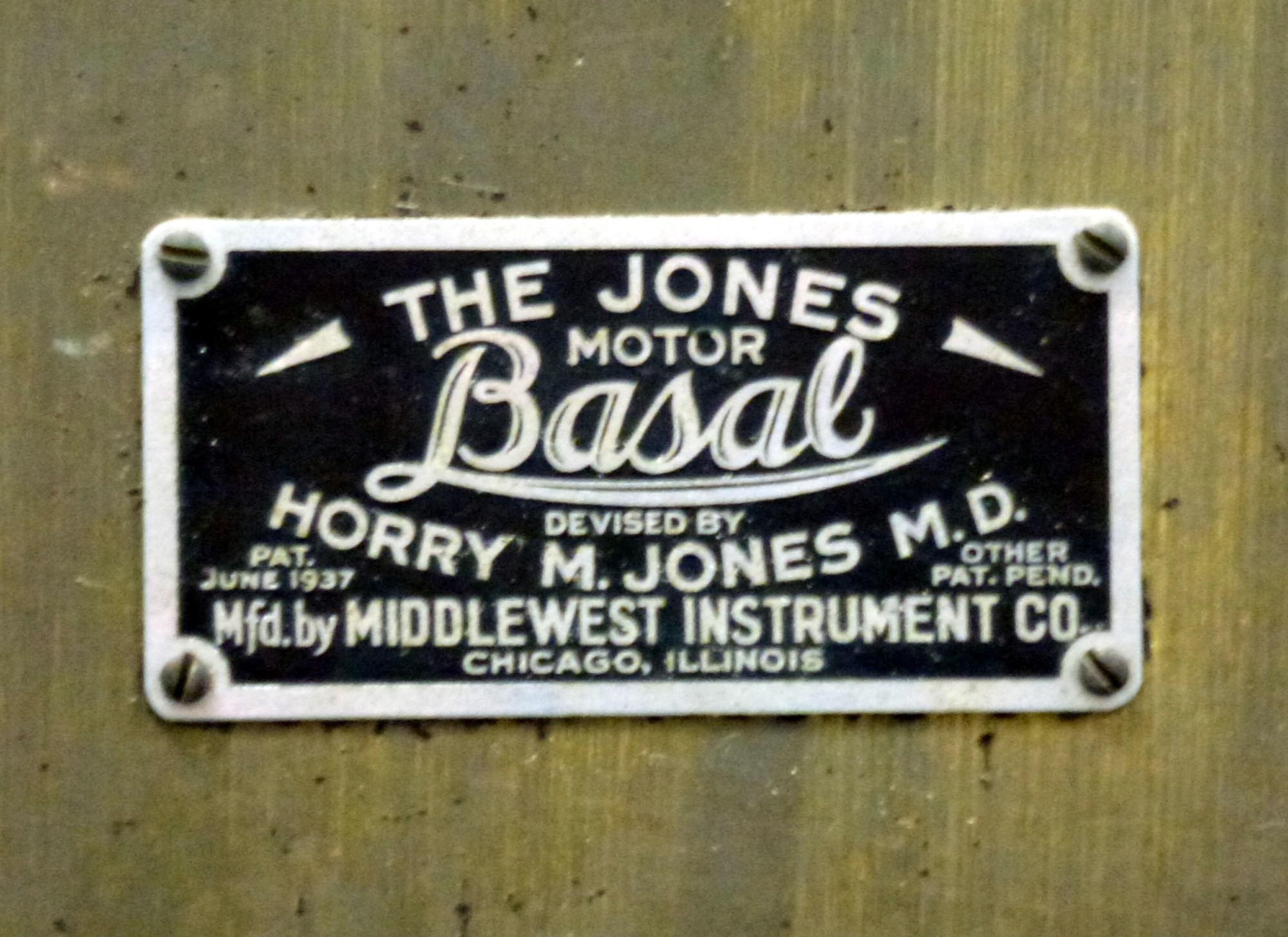
Archivist Phil Montgomery described it as looking like “the skeleton of a Dalek[5]”.
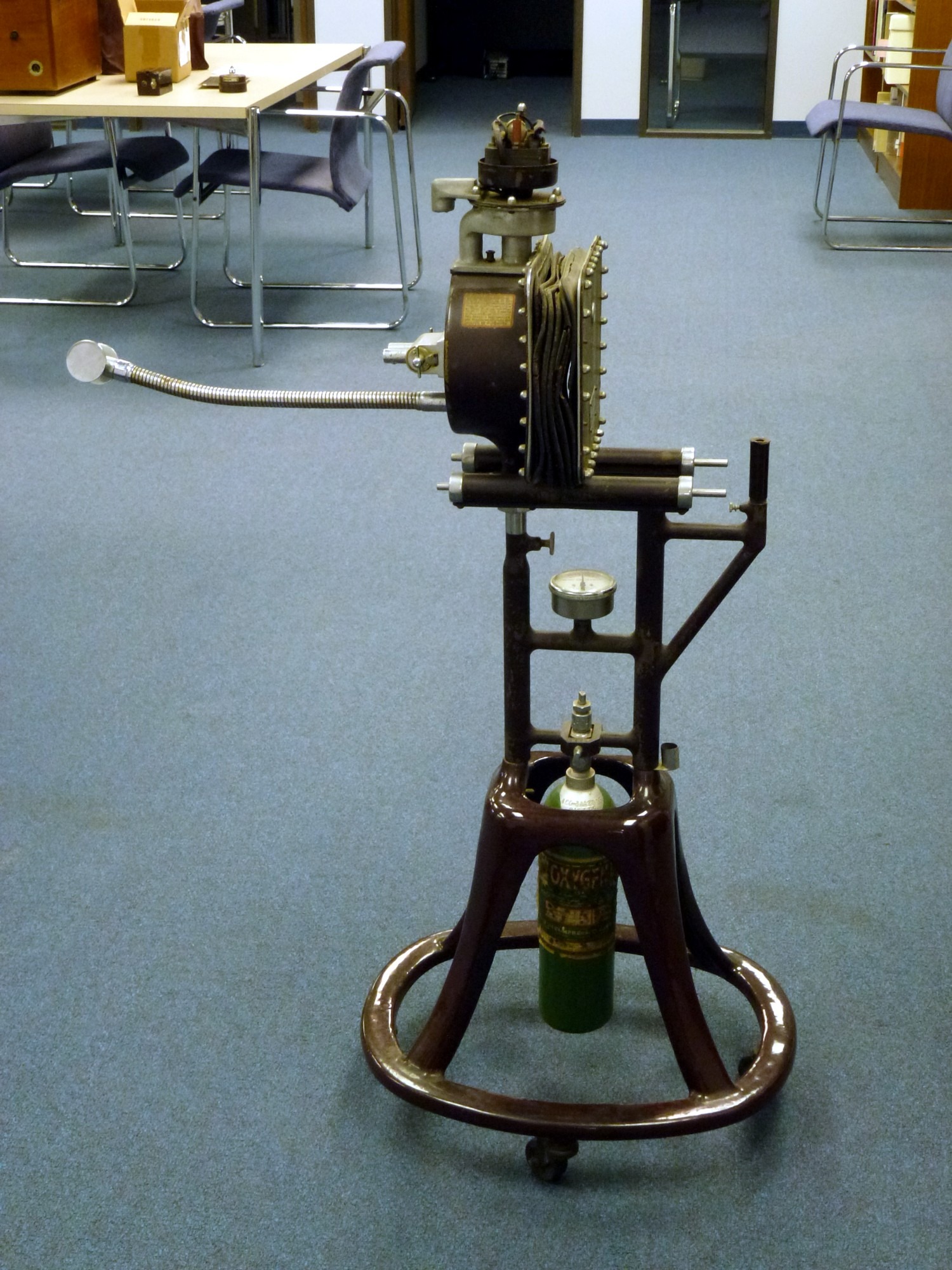
This one is old and somewhat fragmented. The switch box is broken but at least came with the machine. It has a Bakelite[6] case and a nice faceted plastic jewel for an on/off indicator light.
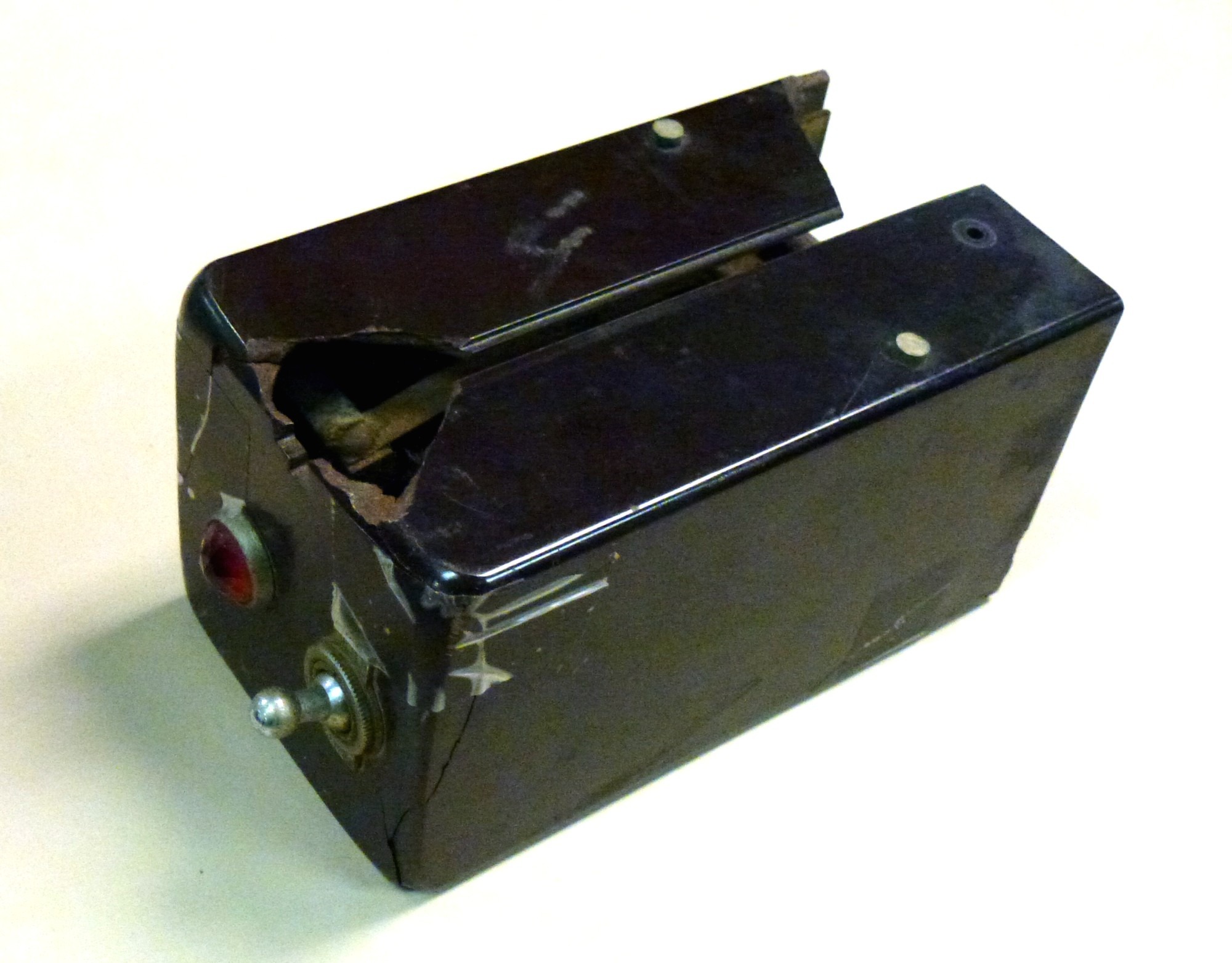
The “abbreviated directions” plaque also came off. Personally, I’d rather whoever was having me breathe into this thing read the full directions, anyway, and not just he abbreviated ones.
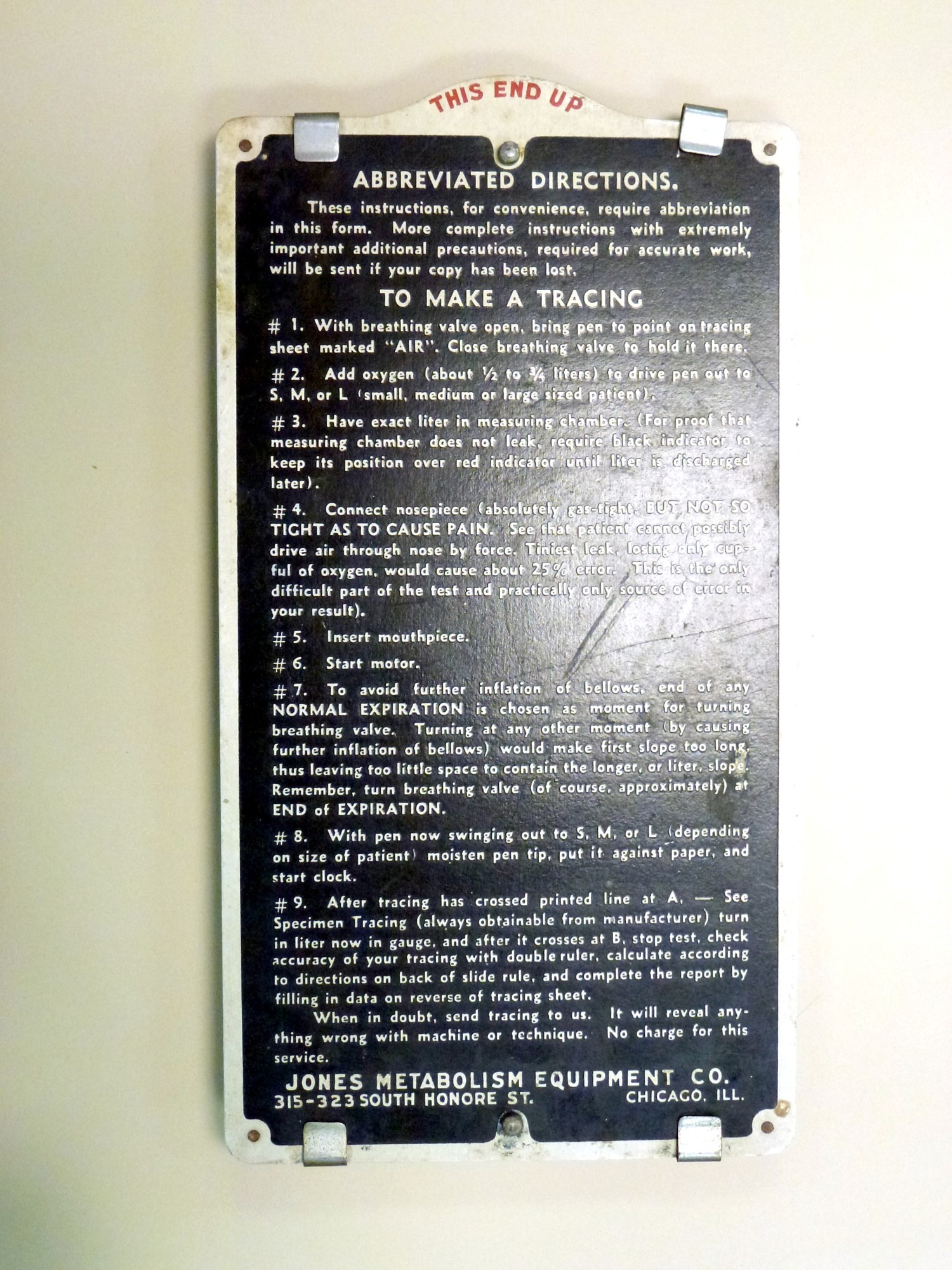
It’s also missing its hoses, face-mask, and soda lime canister. Soda lime granules are used to filter carbon dioxide[7] out of the air breathed into the machine; soda lime canisters are also used on anesthesia machines.
So, how does this work?
Basal metabolism is measured by determining the amount of time it takes a person to consume a given quantity of oxygen[8]: In this case, it’s a liter tank. The higher the metabolic rate, the faster the oxygen is used up[9].

Puritan Maid oxygen, no less, which doesn’t quite make sense except possibly as a vestige of the early 20th century obsession with hygiene and “purity”.
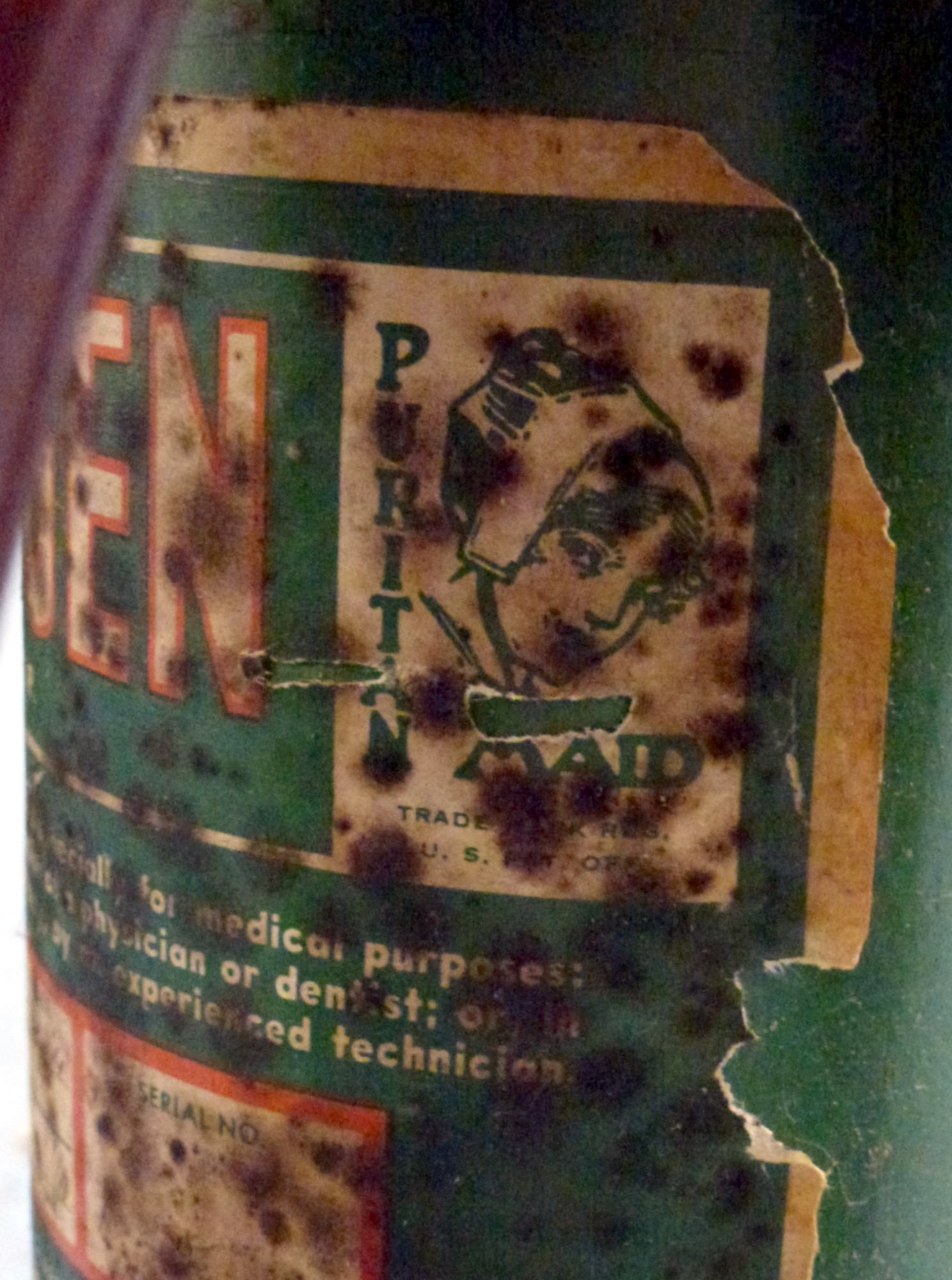
This model was developed by one Horry M. Jones, M.D. Unusual names like “Horry” make researchers very happy, especially when they lift from obscurity a ubiquitous last name such as “Jones”. Here is an early article[9] by Dr. Jones, featuring what seems to be a predecessor to the Motor Basal (the latest references cited are from 1920, considerably earlier than our 1937 patent date).
The motor was used to circulate the oxygen. This notice[10] from the Journal of the American Medical Association, 1939, features a very similar machine and a short explanation of its features. This machine is a Super Motor-Basal Metabolism Tester; ours isn’t Super, so my guess is that the one featured here is the next newer model. You can see in the picture where there are hoses attached that ours no longer has.
That’s the motor on the left and the rubber bellows in the middle. Something else–possibly the soda lime canister–was attached to the right but has been lost. The two short pipes above the “elephant trunk” are where the hoses attached that were connected to the patient’s breathing mask.
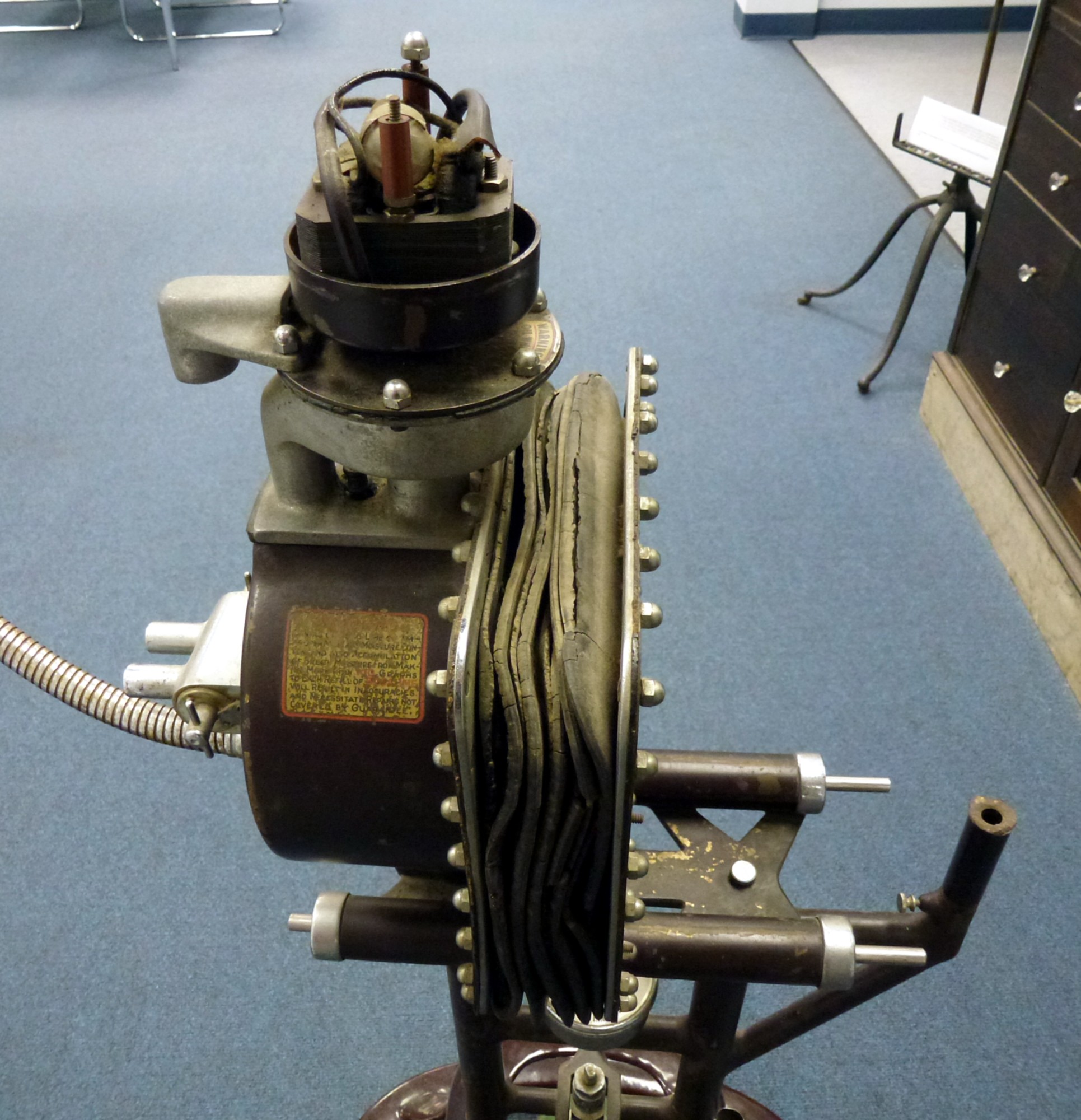
That’s an indicator light on top.
There is also a caution: “Warning: Oil when noisy”.
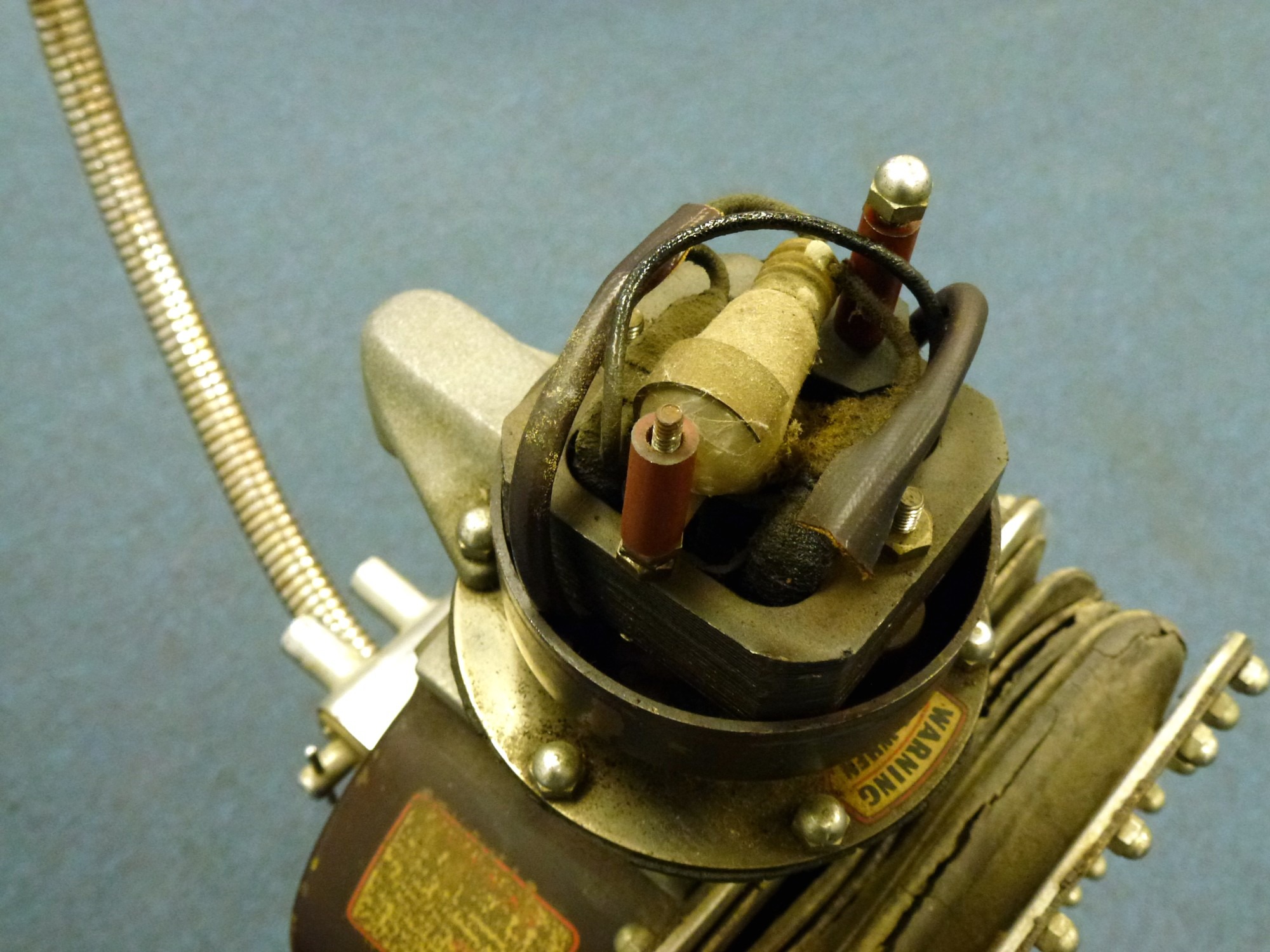
With its cover in place, it also has a red jewel.
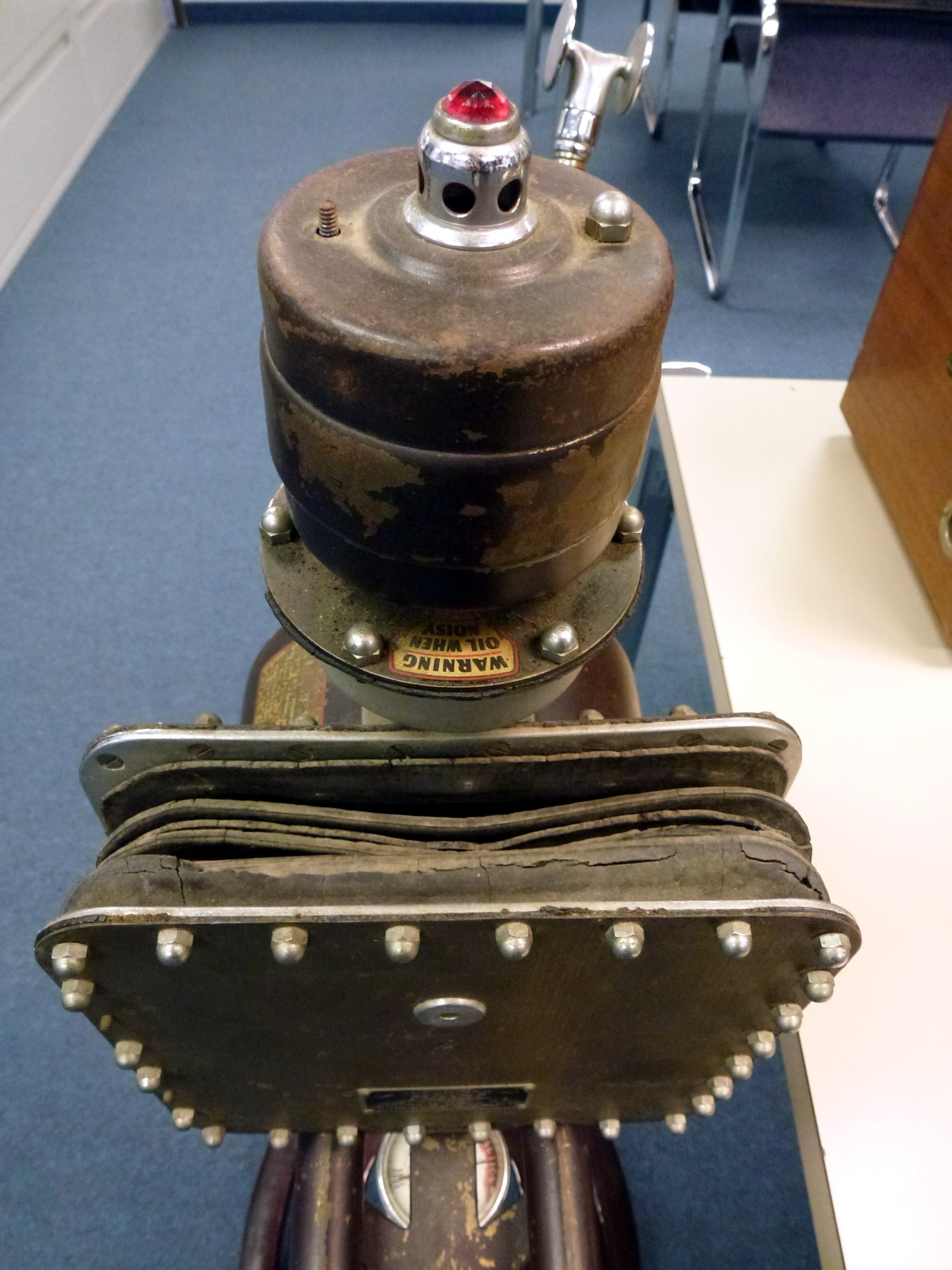
Here is an even later Jones machine in a JAMA announcement from 1950[11]. The design has changed some but it’s still recognizable. This 1939 psychology study[12], and this 1952 study[13] on personality and how it affects metabolism makes reference to a Jones Motor Basal machine.
Works consulted:
[1] Ephemera, Wikipedia.
[2] Realia [library science], Wikipedia.
[3] Basal metabolic rate, Wikipedia.
[4] Metabolism and weight loss, Mayo Clinic.
[5] Dalek, Dr. Who Wiki.
[6] Bakelite, Wikipedia.
[7] Soda lime granules, Wikipedia.
[8] Basal metabolic rate, Wikipedia.
[9] Georgia State University.
[10]Archives of internal medicine, Vol. 27, pages 48-60, American Medical Association, Google Books.
[11] JAMA, Council on Physical Therapy, Vol. 112, No. 21, page 2133, 1939. Obtained through the Texas Medical Center Library.
[12] JAMA, Physical Medicine and Rehabilitation, July 1, 1950. Obtained through the Texas Medical Center Library.
[13] Freeman, G.L., and G.L. Griffin, “The measurement of general reactivity under basal conditions.” Journal of Social Psychology, Vol. 21, pages 63-72, 1939. Taylor & Francis Online.
[14] Greenberg, Paul, and A.R. Gilliland, “The relationship between basal metabolism and personality.” Journal of Social Psychology, Vol. 35, pages 3-7, 1952. Taylor & Francis Online.